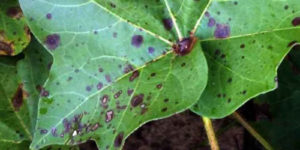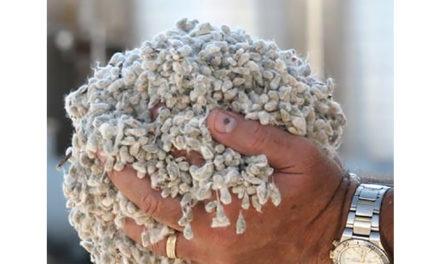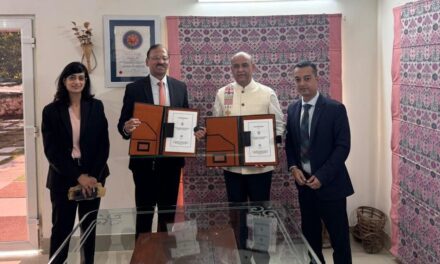Scientists from the University of Georgia College of Agricultural and Environmental Scientists have undertaken research to understand the epidemiology of cotton leaf roll dwarf virus (CLRDV) in Georgia with a $75,000 grant by the Georgia Cotton Commission and Cotton Incorporated. CLRDV causes cotton blue disease (CBD), which reduces yields up to 80 per cent.
Symptoms of cotton blue disease include leaf curling and reddening and drooping leaves. The Georgia Cotton Commission contributed $25,000 and Cotton Incorporated provided the remaining $50,000 for the grant. The objectives of research include identifying alternate and overwintering hosts of the virus and the aphid vectors, understanding the disease development and symptomatology on cotton, understanding the role of aphids as vectors on disease spread, and developing economical and precise detection tools.
“This research will help us generate knowledge about the virus and its spread, symptomatology, host range, vectors dynamics and the associated yield loss,” said Sudeep Bag, an Assistant Professor on the UGA Tifton campus who specialises in crop virology. “This will further assist us in developing management practices to mitigate the disease.”
Bag, along with other members of the UGA Cotton team — breeder Peng Chee, agronomist Mark Freeman, plant pathologist Bob Kemerait, entomologist Phillip Roberts and agronomist Jared Whitaker — are collaborating with UGA Cooperative Extension agents across Georgia to gauge the severity of the spread of the disease in the State.
In fall 2018, the virus was detected in cotton fields in 14 Georgia counties, including Baker, Ben Hill, Bulloch, Crisp, Colquitt, Dodge, Dooly, Early, Pulaski, Seminole, Sumner, Terrell, Tift and Webster.
“We are in the very early stages of understanding the disease in the US. In the last six to eight months, we have made significant headway in understanding the genomic composition of different isolates from Georgia,” Bag said.
In spring 2019, Bag and his UGA colleagues detected the virus in cotton stalks and regrowth. It was also found in weeds such as henbit and perennial peanut. These could potentially act as a reservoir for the virus and the aphid vector. The detection of the virus from these hosts raises further questions about the current cultural practices of conservation tillage for growing cotton, as these plants can potentially maintain the virus throughout the winter.
“It is extremely important to be highly proactive in studying the disease since there is a lack of basic understanding of the virus and the disease. The team is working on different objectives to generate as much information as possible about the disease,” said Bag.
CLRDV is a single-stranded, positive-sense RNA virus that affects the phloem cells of the plants and is transmitted by cotton aphids. The virus is taken up by aphids during feeding and then deposited into other plants the next time the aphid feeds. The aphid can carry the disease for its whole life, allowing it to infect multiple plants. CLRDV is considered one of the most damaging viruses in cultivated cotton and is the first RNA virus on cotton reported to cause crop loss in the US. “With no resistant cultivars currently available against the virus on cultivated cotton, and the lack of knowledge on the transmission and epidemiology of the disease, the virus is a serious threat to the cotton industry in the USA,” Bag said.











